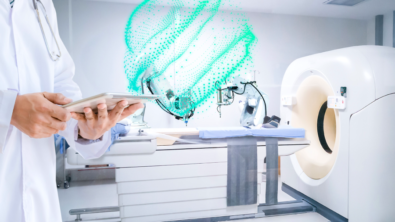The impact of additive manufacturing on medical device development

In the dynamic world of medical device development, a revolution is underway, driven by the fusion of cutting-edge software and additive manufacturing. This powerful combination is shaping a new era of innovation, with Siemens leading the charge in collaboration with medical device manufacturers.
The unique strengths of additive manufacturing
Additive manufacturing’s unique ability to scale production down to lot sizes of a single part is reshaping medical device development. Traditionally associated with prototyping, additive manufacturing is now a game-changer for producing personalized medical devices. Siemens Xcelerator portfolio, a comprehensive suite of software, hardware and services, is at the forefront of enabling this transformative shift.
How two companies are gaining an edge in medical device manufacturing
Unlimited Tomorrow’s TrueLimb custom prosthetics exemplify the power of combining robust design software with additive manufacturing. Each TrueLimb is tailored to an individual patient, ensuring a perfect fit and optimal comfort. Siemens’ design software facilitates the creation of individualized prosthetics by manipulating the geometry based on 3D scans, removing barriers to adoption and positively impacting lives globally.

Digital materials are driving change, particularly in creating lattice structures for implants. LimaCorporate’s Trabecular Titanium, designed with Siemens software, represents a paradigm shift in knee implants. The lattice structure encourages bone in-growth, resulting in cementless surgeries and implants with long-term durability. This innovation is transforming the landscape of implant technology.
How additive manufacturing is reshaping surgery
Additive manufacturing is transforming the field of surgery, particularly in orthopedics, by introducing custom surgical guides for commonly performed procedures like hip, shoulder and knee replacements. Traditionally, surgeons relied on standard cutting guides, making decisions about size and position mid-operation. With additive manufacturing, surgeons can now utilize patient scan data and modern design software to place cutting guides precisely, ensuring optimal cuts based on the patient’s unique anatomy. This customization minimizes invasiveness, leading to faster patient recovery times.
The future of medical device development
The synergy between powerful software and additive manufacturing is ushering in a revolution in medical device design and production. From bespoke prosthetics to innovative implants, the collaboration between forward-thinking companies, such as Unlimited Tomorrow and LimaCorporate, with Siemens, is at the forefront of this transformative journey. As the medical community’s needs align with the capabilities of additive manufacturing, patient outcomes are improving, marking a significant leap forward in medical device manufacturing.
Read the full white paper and learn more about how additive manufacturing is shaking up the medical industry.


